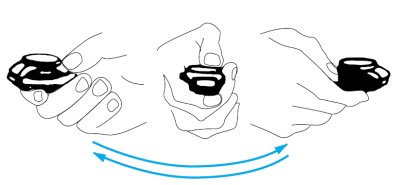Just because you are buying an inexpensive watch doesn’t mean you shouldn’t expect some quality.
Here is what you should look for when buying any watch at any price:
- When buying a watch, pick the watch up and feel the weight. Does it feel dense, or does it feel too light for it’s size? If the watch is plastic, it will feel quite light, but this can be desirable. A steel watch should feel solid. Sub $30 will often feel light, that’s ok, since they have to cut corners somewhere. Anything over $50 should feel pretty solid.
- Look at the fit and finish. Is the watch polished well? Even on a $10 watch, it should have no gaps and everything should line up. The quality of the fit and finish should increase proportionally to about $500, above that, you get really diminishing returns. That being said, a $200 watch can have a better finish than a $2000 watch.
- Flip the watch over, read the back of the watch case. This will usually tell you a little more about the watch. An important thing to note is they will often state ‘stainless steel back’ with a ‘base metal’ case on watches less than $50. What is ‘base metal’? I don’t know, but I know it rusts/corrodes. The crown on my Timex now looks like dull brass. Better watches have stainless steel cases, and should never rust or corrode.
- The back of the watch will also usually tell you what type if replacement battery, country of manufacture, and water resistance.
- Ignore the name, look at the watch. Many watches are made by the same company. Do you like the watch? Nothing else really matters if you don’t like the watch. I have looked at Rolexes, and I just don’t like the style.
- Know what you are getting. This is a big thing. Watches can be separated into some price points:
- $10 to $50. These are the least expensive watches you will want to buy. Timex dominates this market along with many store brands. Expect some corners to be cut in materials. You can find some hidden gems in this range, but almost all are quartz watches, stainless steel back only. They tell time and my $30 Timex is about 13 years old now!
- $50 to $150. A heck of a lot of nice looking watches in this range. Expect to see Fossil, Skagen, lower Seikos, Citizens, and myriad of makers fighting for this market. You should expect to see all stainless steel and some titanium watches in this range. These watches will often have excellent build quality.
- $150 to $300. You are now entering the mid tier of watches. Build quality should be very good, rivaling much more expensive pieces. Cases will be stainless steel or titanium. If they are not, run away. Watch bracelets should be solid, not folded links. Seiko and Citizen are the dominant brands in this arena.
- $300 to $500. Firmly in the mid tier. Seiko, ESQ, Tissot, and other Swiss watches can be had at this price range. Build quality is superb. Materials and finishes are equal to or better than watches costing 10x as much.
- Look at the warranty, but beware. Fossil watches may have a 11 year warranty, but remember, if you have to claim a warranty, the cool watch you have will no longer be made. You also can’t fix inexpensive quartz movements. You can always (within reason) repair a mechanical watch. If you are lucky, the movement be replaced entirely. A quartz movement usually costs less than $20 to build. (This is why watch collectors look down on Quartz movement. A $3000 Quartz Tag Heuer has a $30 movement inside.)
- If you are looking at a Quartz watch, look at the second hand. It will be ticking once a second. The second hand should like exactly with the minute markers. Some watches do, some don’t. It’s a minor detail that not all makers aspire to. If you are looking at a mechanical movement, the second hand should sweep smoothly across the face. An inexpensive Seiko or Citizen beats at 21,600 beats per hour, or 6 beats a second. A Swiss ETA 2824 based watch will beat at 28,800 beats per hour, or 8 beats a second, resulting in an even smoother sweep. There are some Chinese movements out there, such as one used on the Armitron automatic. I believe this moves at 18,000 beats per hour, or 5 beats per second. Regardless of movement, each motion of the second hand should be equal. As a side note, most sales people have never dealt with an automatic watch before. To start the watch, take it in your hand and gently rock it back and forth about 4 inches about 10 to 20 times and it should start. If it doesn’t start in 30 seconds of rocking, you are dealing with a hand wound watch; or a piece of junk.

Work in progress…


